What’s this new car all about then?
This is the big one for the revised Audi A3 range: the performance-flagship RS 3. Usually a new RS has more angles and more holes and this one is true to form.
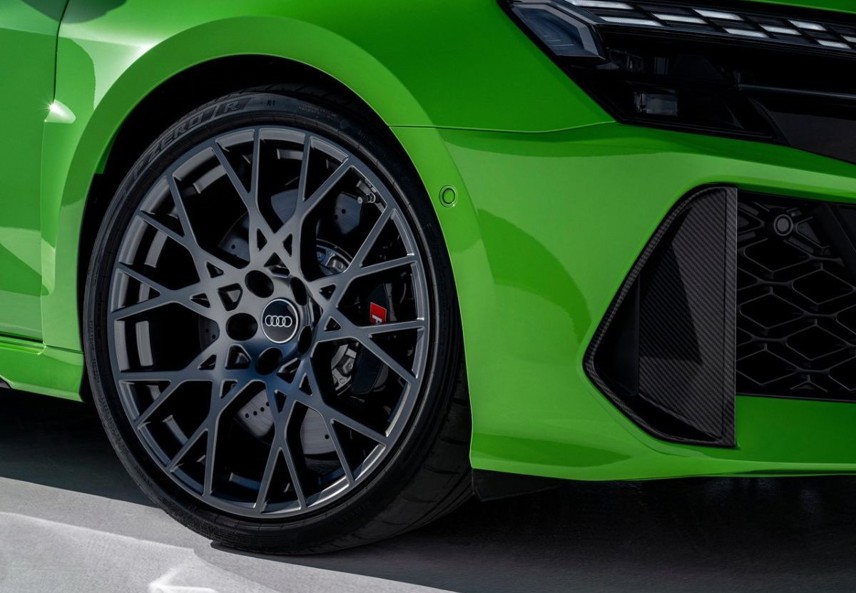
Up front, the hexagonal grille is broader and flatter, there are (functional) side intakes and just for effect, the “digital signature” of the headlights can display a chequered flag. Cute.
At the back, there are vertical reflectors that echo the front intakes, an RS-specific diffuser and two massive oval tailpipes - which aren’t any bigger than the previous model, but look it thanks to black frames.
There are RS-specific colours, including this car’s Kyalami Green, plus Kemora Grey, Ascari Blue and Progressive Red. Or a new matte version of the familiar Daytona Grey if you want to go more stealth.
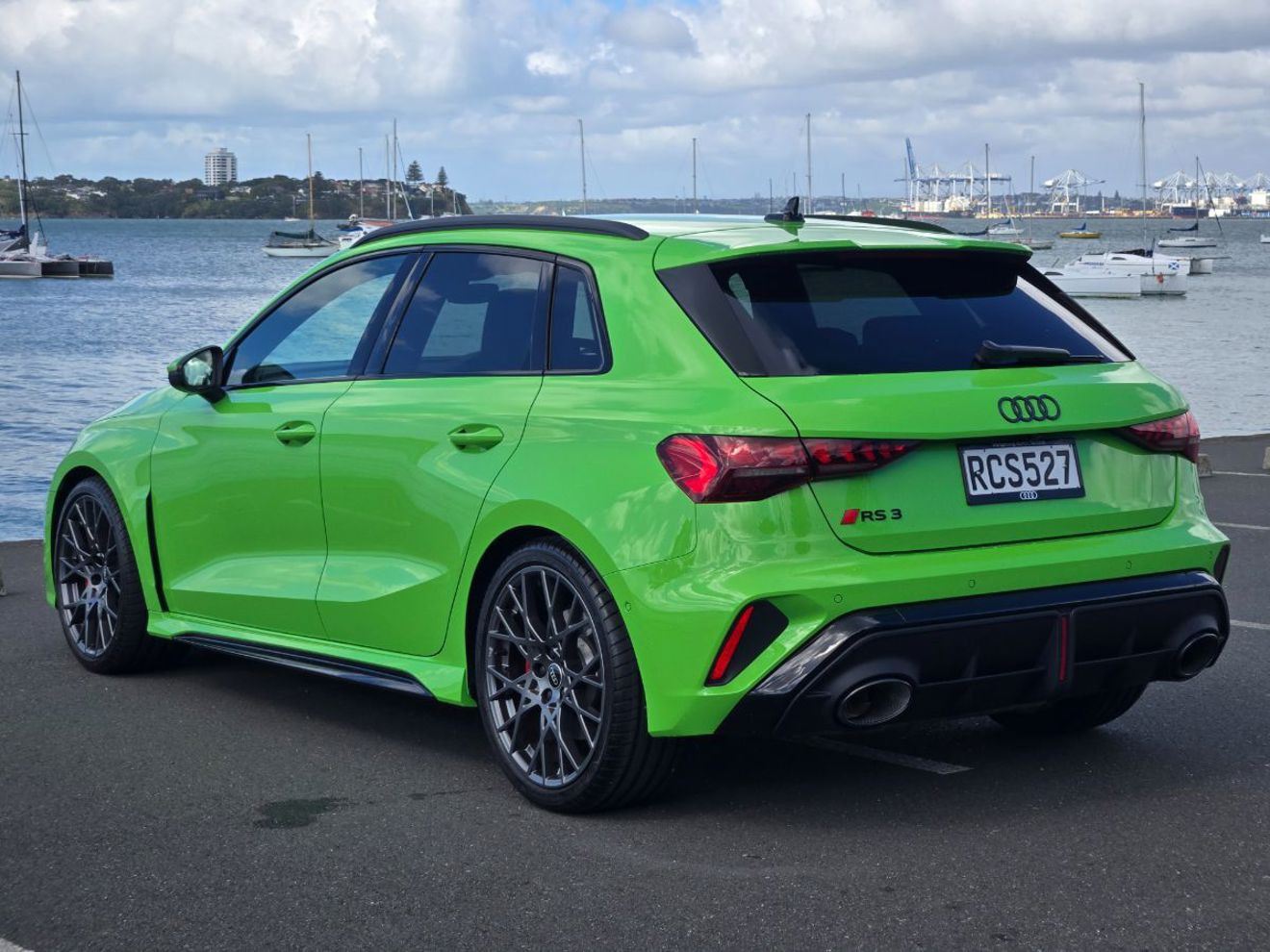
Like the wheels on our RS 3? They’re the optional 19-inch 10-cross-spoke rims in matte grey ($2000).
The key thing is that the RS 3 still has the classically throaty 2.5-litre 5-cylinder engine. The last new RS to be introduced with a 5-pot? Maybe.
Inside, there’s plenty of RS stuff to make it seem a bit more special/motorsporty: the steering wheel is new and even flatter above and below than before, there are aggressive RS sports seats (Nappa leather with Dinamica) and, on our car, no-cost green stitching to match the leery exterior colour.
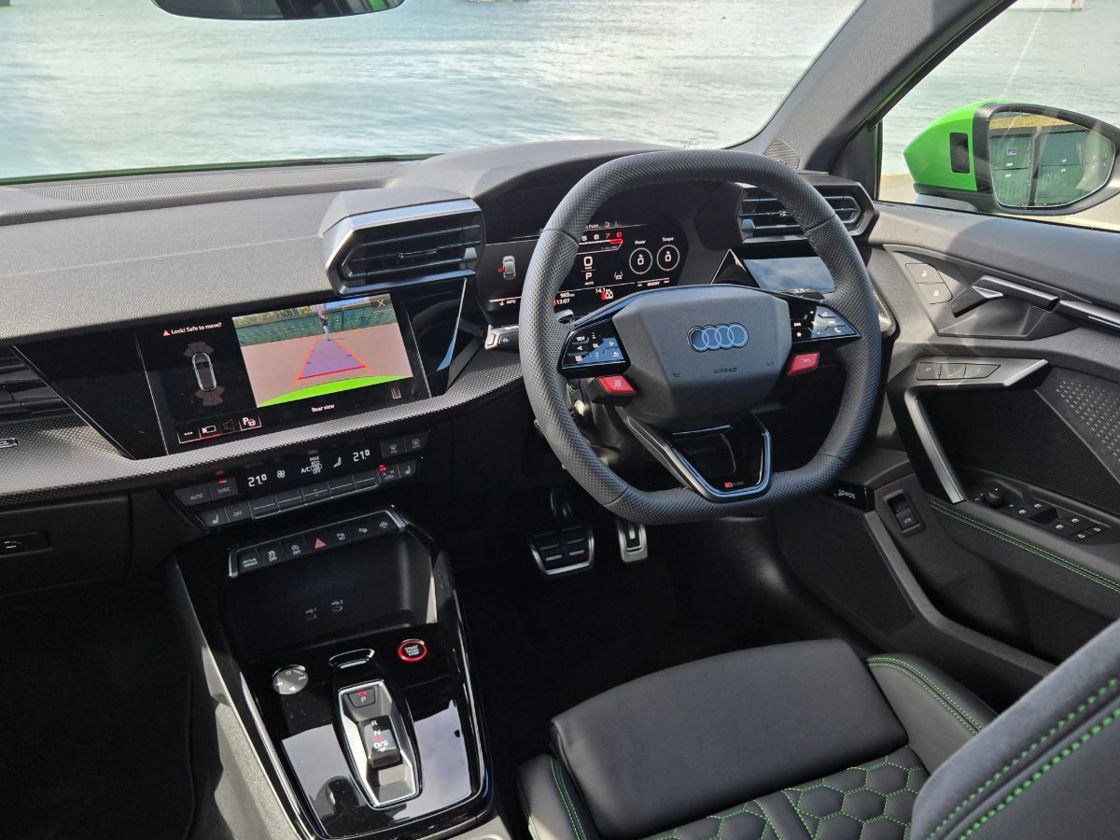
That steering wheel has two new controls: a red button on the left to go straight to Performance mode, which is designed specifically for track use.And yeah, the powertrain is insufferably aggressive on the road when it’s active, so best save it for the circuit. On the right is another red button that takes you to RS Individual, which is where you go for fun road driving.
0-100km/h in 3.8 seconds is seriously fast for a combustion-engined car. It would be seriously fast for an EV, to be honest.
The “virtual cockpit plus” dashboard is carried over, but with new features including a central revcounter that can be flanked with displays for coolant, brakes, engine oil and the torque splitter (more about in a minute).
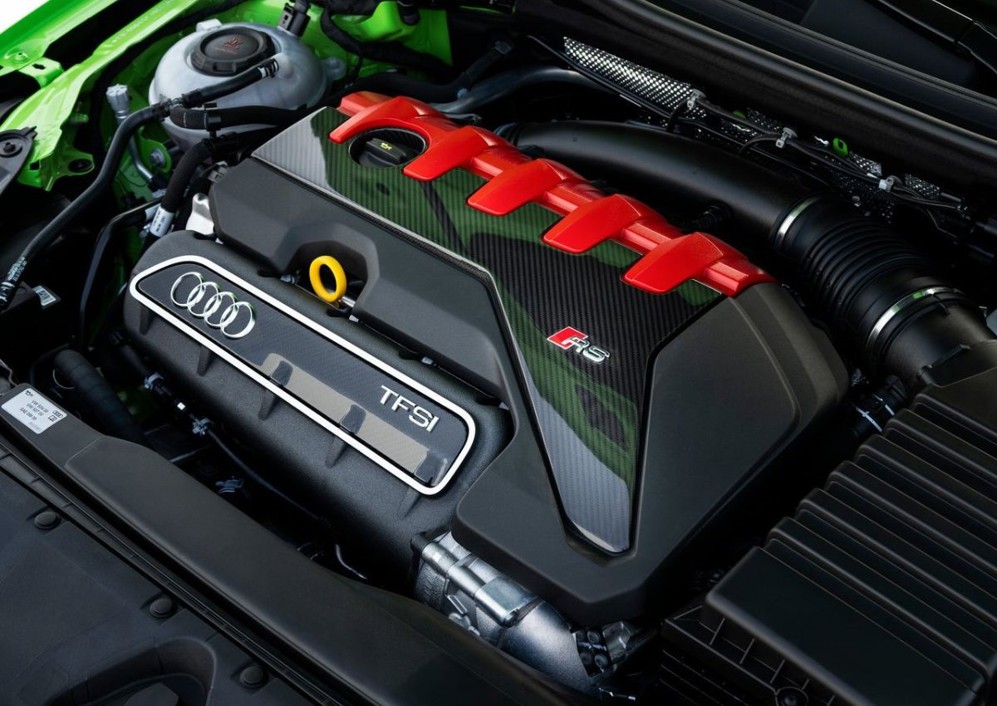
Enough about the garnish. The important stuff is under the skin of course, and the key thing is the RS 3 still has the classically throaty 2.5-litre 5-cylinder engine. The last new RS to be introduced with a 5-pot? Maybe.
The improved torque splitter enables drift mode, including what Audi Sport is calling an 'evolution in oversteer'.
So that’s 294kW/500Nm and 0-100km/h in 3.8 seconds, which is seriously fast for a combustion-engined car. It would be seriously fast for an EV, to be honest.
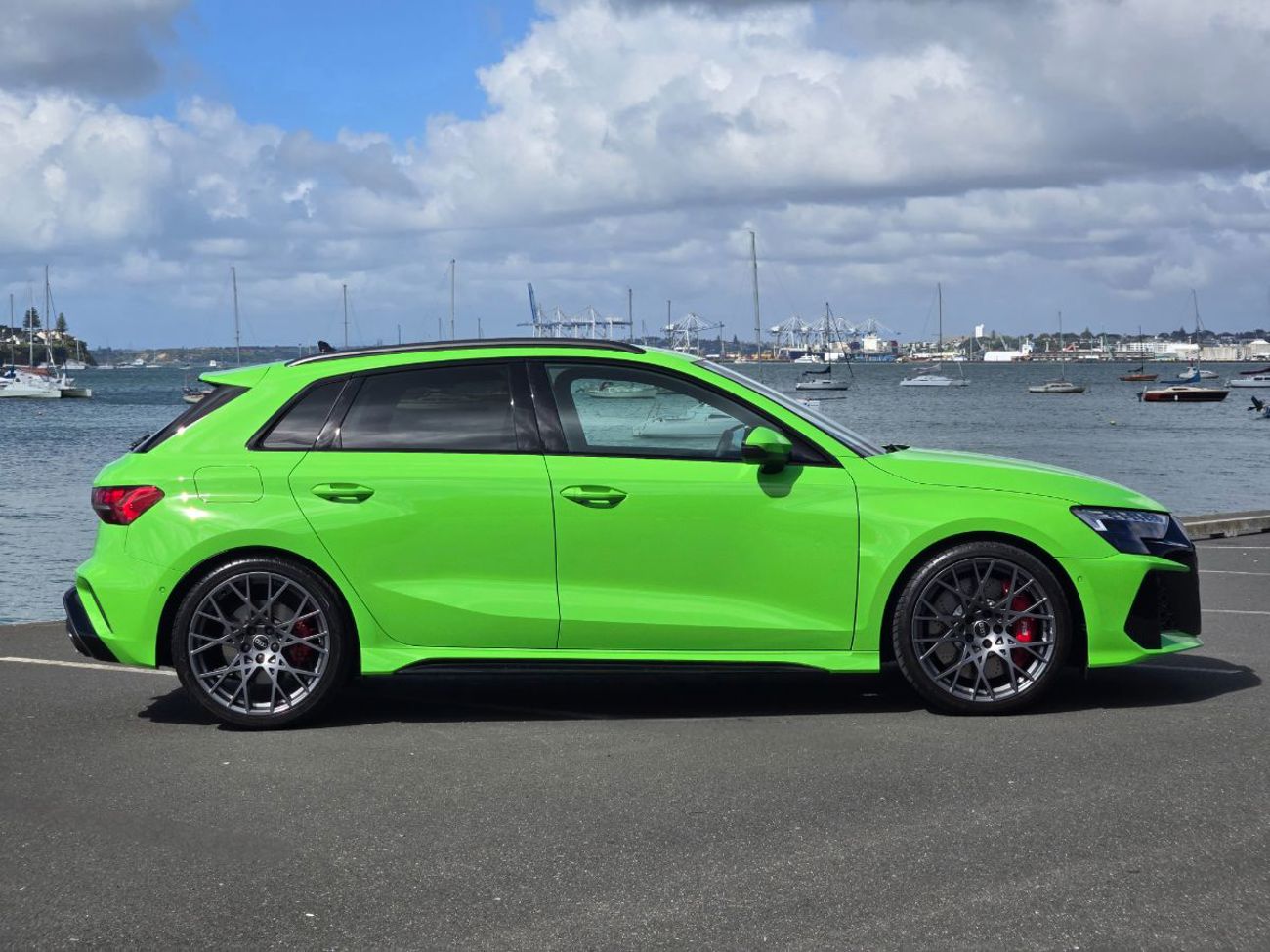
The exhaust gets louder in the more aggressive drive modes, but the flap control is also optimised between 2200-3500rpm, regardless of which setting you’re in. So basically, it sounds fruity any time you put your foot down.
The improved torque splitter (think torque vectoring) has fully variable torque distribution between the rear wheels, which can reduce understeer and increase cornering speeds.
It also enables the drift mode, including what Audi Sport is calling an “evolution in oversteer”. In previous models, oversteer (on the track, obviously) was primarily generated by an excess of throttle; now, the steering angle plays a greater part and communicates more with the torque-splitter software.
How much is it?
Base price of the RS 3 is $128,990. That’s a $25k premium over the new S3, but the RS 3 is a whole lot more car (and with a whole extra cylinder, remember).
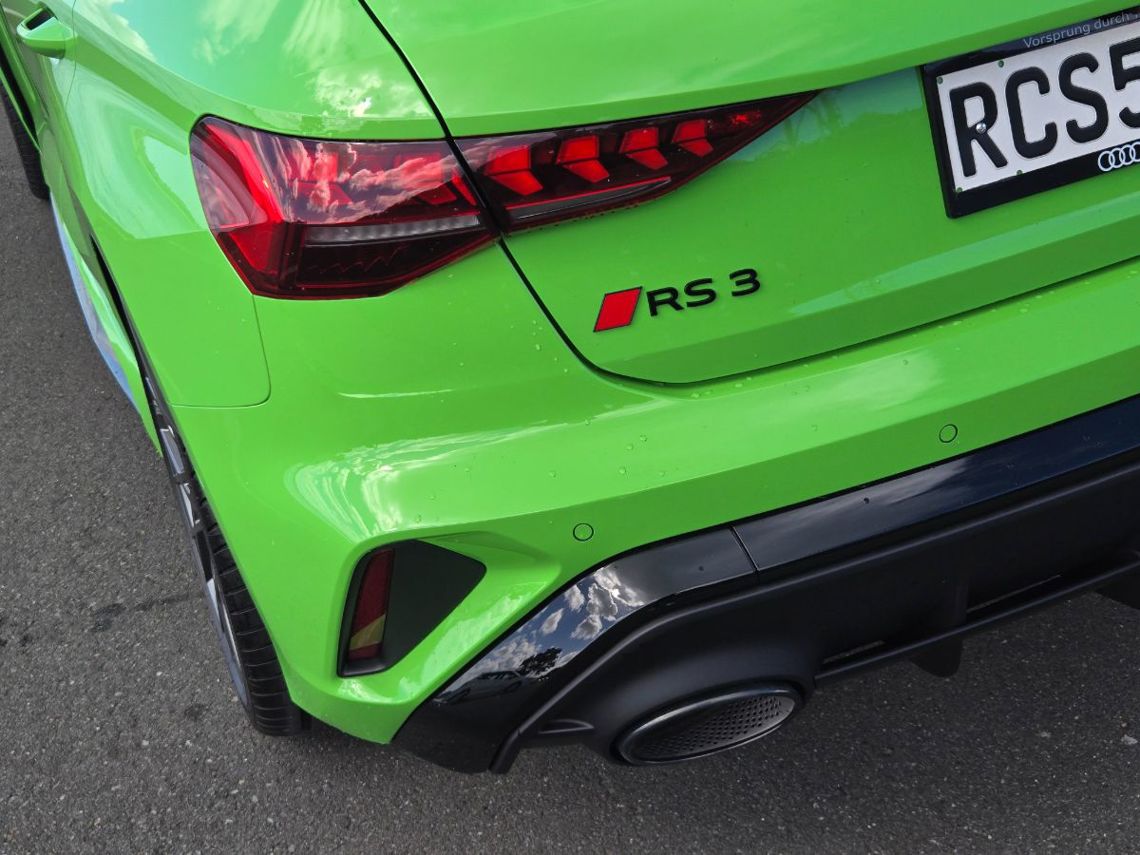
There’s plenty of potential to bolster the price with options, including some pretty serious stuff: Pirelli P Zero Trofeo R tyres for $2000, for example. But also a fair bit of ornamentation, including carbon for the engine compartment cover or a full-width carbon inlay for the dashboard.
What’s it like to drive?
Ah, well that’s the sad story. This was really just an RS taster, a few weekdays in Audi’s monster hatch and not a lot of opportunity to let it do what it does best: go fast.
But for what it’s worth, the 5-cylinder engine is as evocative as ever and the dynamic package seems a lot more nuanced than previous RS models. It’s still capable of being enormously leery if you want, but it can play day-to-day driver quite well too.
What other cars should I consider?
Crazy-fast hot hatches with 300kW: that’s a select group.
The obvious one is Mercedes-AMG’s A 45 S (310kW, $129,500); BMW M doesn’t really have a direct competitor, but if you’re prepared to lose a couple of doors there’s the M2 coupe ($149,500, 353kW), which is an epic machine - albeit even more powerful and much more expensive.
There are small EVs with similar accelerative potential (Smart Brabus springs to mind)… but that’s not really the same thing, is it?










